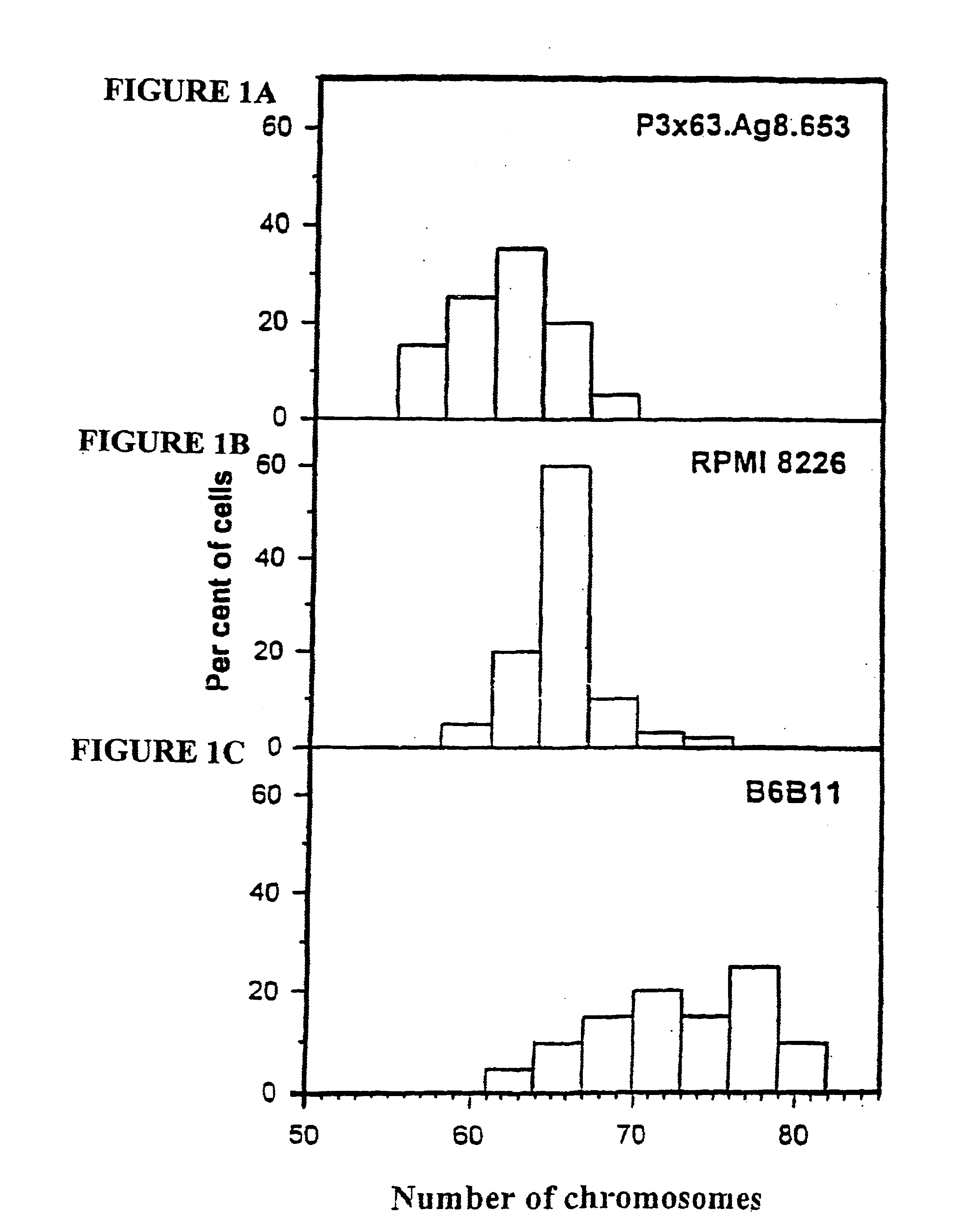Tumor-associated marker
a marker and tumor technology, applied in the field of tumor-associated markers, can solve the problems of limiting the use of such antibodies, affecting the progress of this field, and affecting the use of xenogenic monoclonal antibodies in in vivo diagnostics and therapy, and achieves better tools for tip-2 immunoassays, high affinity and specificity
- Summary
- Abstract
- Description
- Claims
- Application Information
AI Technical Summary
Benefits of technology
Problems solved by technology
Method used
Image
Examples
example 1
Construction of Mouse-human Heteromyeloma for the Production of Human Monoclonal Antibodies.
Introduction
[0466]B6B11 or B6B11-like cells may be produced by the fusion of mouse myeloma cells with human myeloma cells selected for non-secretion of antibody. The specific generation and application of heteromyeloma B6B11, is described herein below. B6B11 was obtained by fusing the mouse HAT-sensitive and G-418 resistant myeloma X63.Ag8.653 with the subclone of human myeloma RPMI 8226 selected for non secretion of lambda light chains. Fusion of human splenocytes and B6B11 cells resulted in a fusion frequency of 30-50 hybrids per 107 cells. This is similar to the frequency of murine hybridoma formation. The hybrids are readily cloned by limiting dilution, produce antibodies for at least 10 month and grow in serum-free media. Two clones were obtained which secreted human IgM reactive against lipopolysaccharide (LPS) of Gram-negative bacteria. These clones were obtained by fusing in vitro imm...
example 2
Trioma MFP-2, a Fusion Partner for Generating Human Monoclonal Antibodies
Introduction
[0519]A precursor hybridoma cell line was obtained by hybridization of the commercially available human myeloma cell line RPMI 8226 and mouse myeloma X63.Ag8.653 resistant to both 8-Azaguanine (8-Ag) and Geneticin 418 (G-418). One of the resulting clones, B6B11, was selected in the presence of G-418. B6B11 was grown in the presence of increased concentrations of 8-Ag and is resistant to both G-418 and 8-Ag (See Example 1).
[0520]Although B6B11 can be used to make human hybridomas by fusing with human lymph node-derived lymphocytes or spleen-derived lymphocytes, B6B11 was not capable of fusing with human peripheral blood lymphocytes (PBL) or resulted in a very low yield of hybrids (see example 1).
[0521]In order to overcome this problem, B6B11 was fused with human lymph node lymphocytes and several hybrids were obtained. The resulting cells were analyzed for human immunoglobulin production or productio...
example i
Human mRNA for KIAA0338 Gene, Partial cds
[0661]Fully human monoclonal antibody (fhMAb) 13.42 recognizes the unknown antigen human mRNA of which is known for the gene called KIAA0338 (sequence shown in FIG. 32). The calculated molecular weight (MW) for this breast cancer-associated marker is 103.5 kDa, although on Western blot it shows the protein of molecular weight ˜40 kDa. Three MHC I binding peptides were deduced from the sequence; these peptides may be considered as peptide vaccine candidates.
PUM
| Property | Measurement | Unit |
|---|---|---|
| concentration | aaaaa | aaaaa |
| volume | aaaaa | aaaaa |
| concentration | aaaaa | aaaaa |
Abstract
Description
Claims
Application Information
 Login to View More
Login to View More - R&D
- Intellectual Property
- Life Sciences
- Materials
- Tech Scout
- Unparalleled Data Quality
- Higher Quality Content
- 60% Fewer Hallucinations
Browse by: Latest US Patents, China's latest patents, Technical Efficacy Thesaurus, Application Domain, Technology Topic, Popular Technical Reports.
© 2025 PatSnap. All rights reserved.Legal|Privacy policy|Modern Slavery Act Transparency Statement|Sitemap|About US| Contact US: help@patsnap.com



